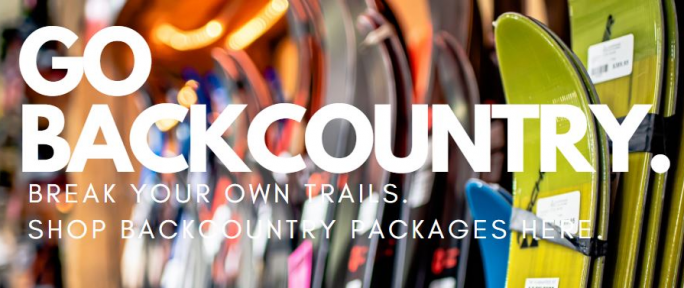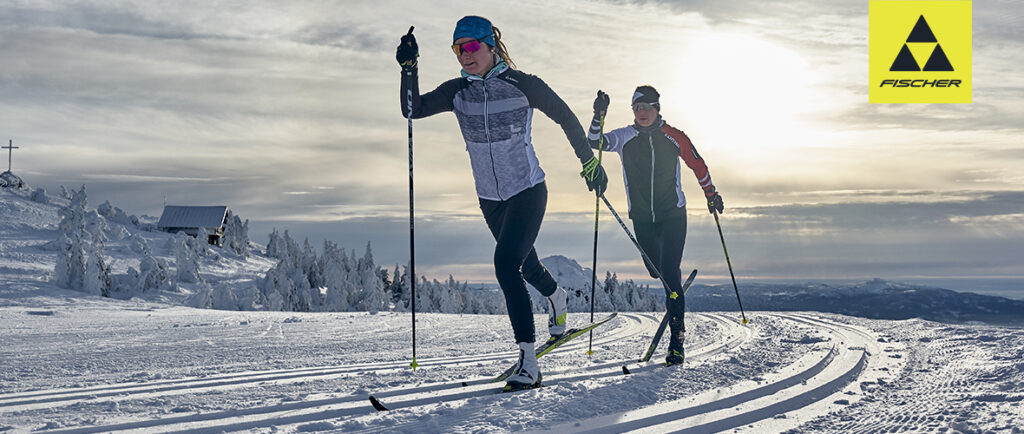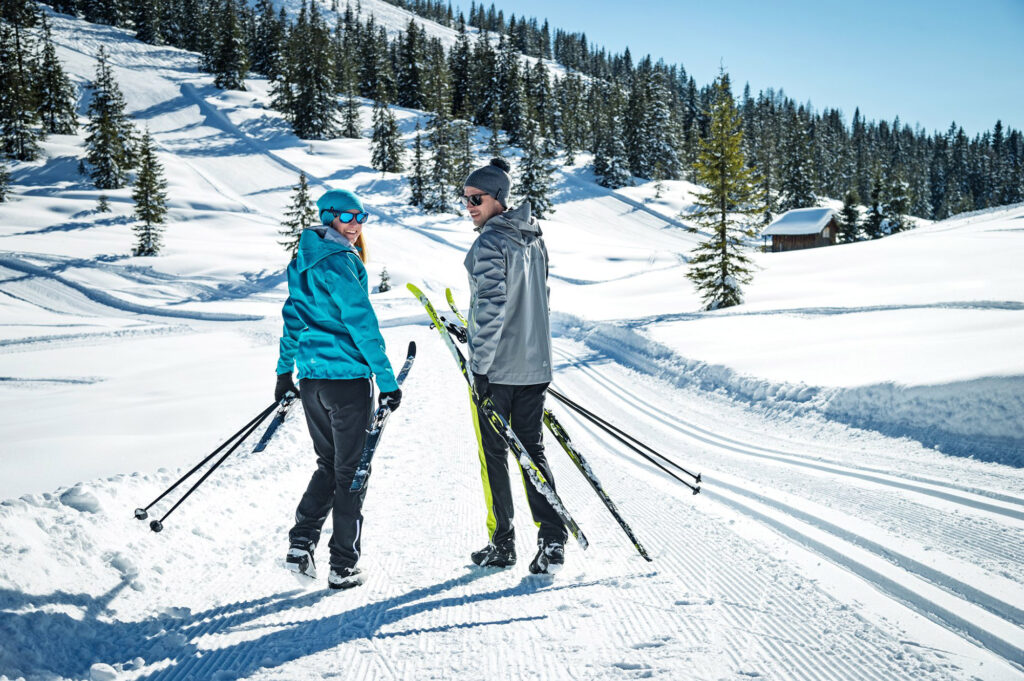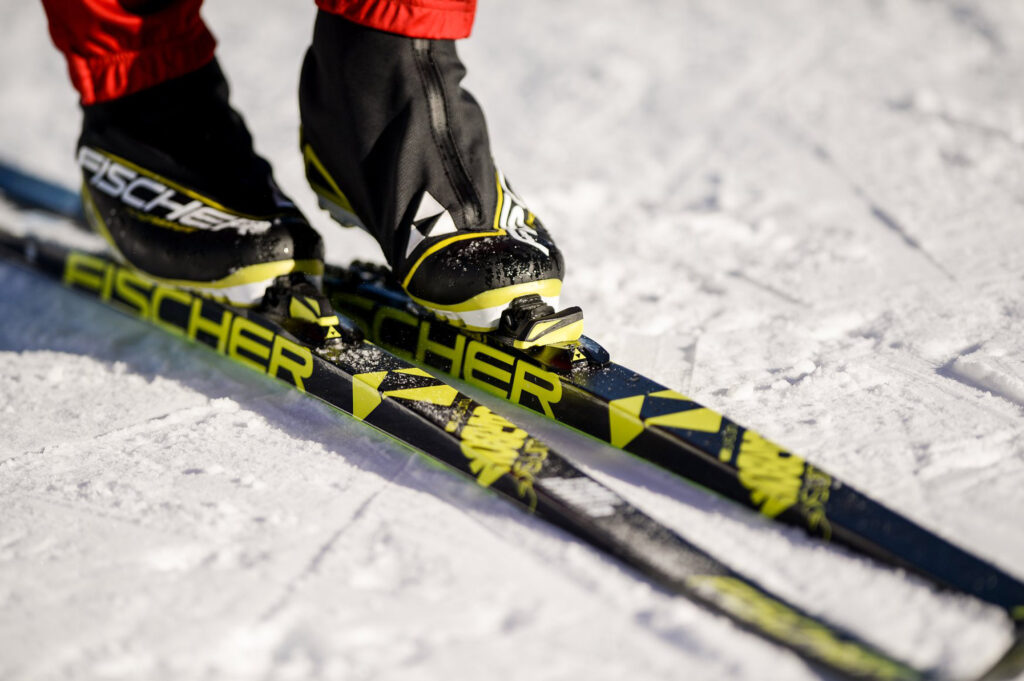Cross-country Skiing Is This Winter’s Hottest Sport!
Don’t get left out in the cold, grab your XC skiing gear before it sells out.

Cross-country skiing is a great way to stay in shape and have fun during the winter months. Shop our inventory of new cross-country skis, boots, and bindings – Now All Available.
As winter approaches, my caution to you is this: Don’t get left out in the cold, get into cross-country skiing now. Do not delay, GO, immediately to your nearest ski shop XC – cross country goods dealer, and get your gear before it’s too late. You do not need to live near a mountain to cross-country ski, you just need snow. The Cross-Country Ski Areas Association, the authority on all things cross-country skiing, is planning for a whopping increase in sales this year, and most industry insiders believe that by Dec. 30, you won’t be able to buy a pair of XC skis.
Heed my warning and get into this naturally socially distant sport now. It is with this in mind that I’ve prepared a cross-country skiing primer for you.
In cross country skiing (also known as “Nordic” skiing) your skis, boots, and poles form a bond with your body that allows you to swiftly glide your way through a snow-covered forest, so making sure you have the right equipment for your outing can mean the difference between an unforgettable day exploring and a day that deters you from ever clicking in again. So how do you choose the right cross-country ski set up for your upcoming expedition? It all depends on the type of skiing you’re about to embark upon.

Types of Cross-Country Skis
There are three main types of cross-country skis which correspond to the type of skiing you’re hoping to do: Touring, classic, and skate. Each ski type will aid you in a different skiing technique and on a different set of surfaces.
Touring
Touring skis can be used on groomed or ungroomed trails. They are also known as “backcountry” skis because of how rugged they can be. Generally, these skis are longer, light in weight, and a little bit thicker in width to provide more stability to skiers who decide to take on ungroomed trails. If you’re looking to utilize your skis both on groomed trails at your local XC ski center and on your local hiking trails, investing is a pair of touring skis is highly suggested. Those looking to tackle steeper and deeper conditions should also look at purchasing skis with metal edges.
Classic
Classic skis are used on groomed trails that provide a track set, grooves within the snow that your skis glide through. Track sets can be found at your local XC ski center. These skis are long, narrow, lightweight, and have a range in stiffness depending on the performance you are looking for.
Skate
Skate skiing is used on groomed trails. These skis are long, narrow, lightweight, and have a stiff flex to help transfer power from one stride to the next. This technique used for skate skiing resembles that of ice skating.

Waxable skis are desired by many who are ultimately looking to compete or get the most out of their ski on any given day. This is because you can change up the wax you apply to the bottom to fit the conditions outside. Everything from air temperature, snow temperature, snowpack, and terrain can come into play. Don’t worry though, there are plenty of all-around waxes you can use too so you don’t have to keep reapplying wax before every ski session.
Wax less base cross country skis require low maintenance as they do not require the reapplication of kick wax throughout the season. Ridges are cut into the base of the ski that mimics the effects of kick wax. So, don’t be fooled by the naming, you’ll still need to apply glide wax to the base of your skis from time to time. Wax less skis require less maintenance, making them great for beginning skiers and those who want to save the time involved in waxing.

Bindings
Bindings are what keep your boots connected to your skis as you glide your way through the snow-covered forest. Bindings are small but essential for all setups. Make sure you are aware of the pattern of your boot before you select a binding to be placed on your skis—Not all boots are compatible with all bindings.
NNN, or New Nordic Norm, pattern bindings feature two thin ridges that are raised to match the sole pattern on your boot. Boots connect to the binding by a single metal bar that runs across the tip of the boot. The boot to binding paring acts like a hinge as you glide forward in both classic and skate techniques.
SNS, or Salomon Nordic System, pattern bindings feature a single raised ridge that spans the bottom of your boot. Like the NNN pattern binding, the SNS utilizes a single metal bar to connect the boot to the binding allowing it to hinge as you glide along. Note that there is a variation of the SNS, the SNS Pilot, which uses two metal bars to connect the boot to the binding, allowing for superior flex and kicking motion without compromising stability.
NIS, or Nordic Integrated System, is essentially the same as the NNN pattern just attached to the ski in a different way. This baseplate pattern is compatible with the NNN pattern boots.
